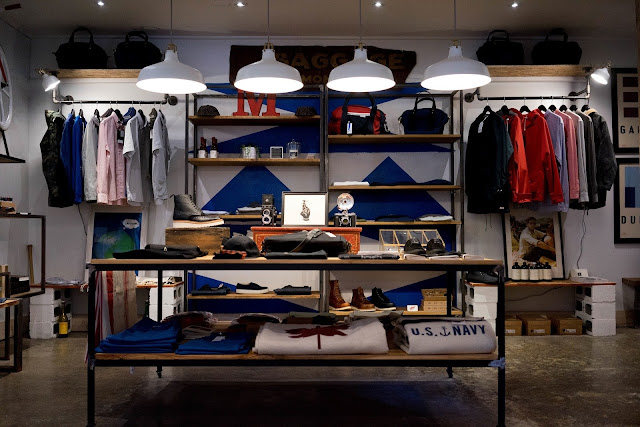In a previous blog entry I answered, "What is a line?". That recent blog and other things I have been reading have led me to the next logical question. Does your line tell a story? I partially addressed it in the previous blog.
Some say a line tells a story. That is the more difficult thing to interpret or even observe. Not too many customers care about your source of inspiration unless it is an integral value that they share.
There is a line story and a company story/history/values and some people confuse the two. Does the line story have to reflect the company story? Does each piece have to reflect the company values? How much do the two overlap? Or should they?
A story or narrative describes a sequence of events or parts through the written word or visual depiction. The story contains clues, pieces, or parts that the reader or observer can put together to make a whole picture or concept. At least this is the dictionary definition.
How does this apply to a line of clothes or even a clothing business? You will hear on tv shows like Project Runway that a line should tell a "story". Each piece should be part of a whole. There should be a beginning, middle, and end. If you watch a runway show, the storytelling becomes even more important because a runway show is part entertainment. The runway show of a high-end designer is an easy, not necessarily the best, example. They may start with a strong day piece, maybe some office wear, and usually end on an evening gown. It's as though their customer will be able to visualize wearing each piece as they go through their day.
In the regular old fashion business, the concept becomes more abstract. Still, each piece of your line should look like it belongs to the whole. A sales rep will merchandise your line as though it has a story. They will start with a beginning piece and end with the logical ending piece. They may start with the strongest piece, weakest, or maybe the middle and put it all together so it is most appealing to the buyer. Each buyer may get a different story. A skilled sales rep will know what will appeal best to get the buyer to buy. The entertainment value is overshadowed by the business side of buying and selling.
This why I stated above that the buyer, and even the end consumer, doesn't really care about your source of inspiration or all the blood, sweat, and tears that were shed to complete the line. You shouldn't have to tell them any of that. It isn't relevant. A customer should look at your line and pick out the pieces they like well enough to buy. The story should be subconscious.
A line sometimes has a theme, inspiration, color, style, mood that ties each piece together. If you look at Tea Collection again, you can see an apparent theme. I see beach, sand, and casual. There is a beginning, middle, and end. Do you see it too?
This is not to be confused with your company values, history or story. Now there are some design companies out there that mix their company values and history into each piece. Their story lies on the surface. It is apparent what their clothing stands for, how it was made, and why. There is nothing wrong with doing that, if you choose. But ask yourself, "How long will my story be relevant? How long will the customers care? Will they care?"
What if you create an organic cotton line of screen printed t-shirts for baby with rock star sayings made in a sweatshop free factory? Perhaps those things are part of your core company values or history. How long will this story last before it becomes stale or passe. By mixing your brand, line, and company philosophy too closely, you will limit your company's growth and creativity. If you wear your story on your shirt sleeves, people will eventually tire of you. Such a story can and should be an integral part of you as a designer, not something blasted in their face.
What do you think? How much should your line story and company values overlap?


No comments:
Post a Comment